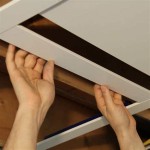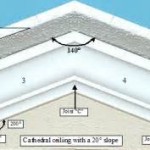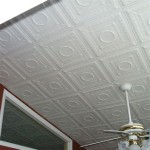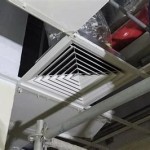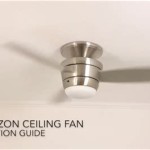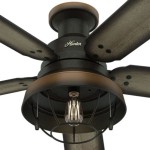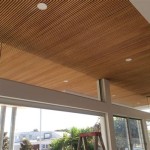Discovering The Beauty Of Victorian Ceiling Fans And Lights
Victorian design, a movement that flourished throughout the reign of Queen Victoria (1837-1901), continues to captivate with its elaborate details, romantic sensibilities, and emphasis on craftsmanship. This period witnessed significant advancements in technology and manufacturing, influencing the aesthetics of interior design elements, including ceiling fans and lights. Understanding the historical context and design principles underpinning Victorian ceiling fans and lights allows for a deeper appreciation of their enduring beauty and functionality.
The Victorian era was characterized by a rapid expansion of industry and a growing middle class. This newfound prosperity led to a desire for elaborate home furnishings and décor that showcased wealth and refinement. Interiors were often filled with ornate furniture, rich fabrics, patterned wallpapers, and decorative accessories. Lighting fixtures, and later ceiling fans, played a crucial role in enhancing the ambiance of these spaces, moving away from purely functional illumination towards decorative expressions.
Initially, illumination in Victorian homes relied heavily on gas lighting. However, as electricity became more widely available towards the end of the era, electric lighting fixtures began to appear, offering a cleaner and more convenient alternative. These early electric lights were often designed to mimic the look of gas lamps, reflecting a transitional period in lighting technology.
The introduction of ceiling fans during the Victorian era was initially driven by a desire for comfort in warmer climates. Early ceiling fans were often manually operated, utilizing a system of belts and pulleys connected to a motor located elsewhere in the building. As electric motors became more compact and efficient, electric ceiling fans emerged as a popular option for both residential and commercial spaces.
Key Characteristics of Victorian Lighting
Victorian lighting fixtures are distinguished by several key characteristics that reflect the design sensibilities of the period. These features include: ornamentation, materials, and form.
Ornamentation is a defining aspect of Victorian design, and this is reflected in the intricate details found in lighting fixtures. Common decorative motifs include floral patterns, scrollwork, acanthus leaves, and geometric designs. These embellishments were often cast in metal or incorporated into glass shades, adding a layer of visual complexity and richness to the fixtures.
The materials used in Victorian lighting were carefully chosen to convey a sense of luxury and quality. Brass, bronze, and wrought iron were commonly employed for the fixture frames, often finished with polished or antique patinas. Glass shades were another essential component, ranging from clear glass to etched, frosted, or colored glass. The use of colored glass shades was particularly popular, casting a warm and inviting glow into the room.
The forms of Victorian lighting fixtures varied depending on the intended use and the specific style of the room. Chandeliers were a popular choice for formal living rooms and dining rooms, featuring multiple arms and elaborate ornamentation. Wall sconces provided ambient lighting in hallways and bedrooms, while table lamps offered task lighting for reading and writing. These fixtures were often designed to complement the overall décor of the room, creating a cohesive and harmonious aesthetic.
The Evolution of Victorian Ceiling Fans
The evolution of Victorian ceiling fans mirrors the advancement of technology during the era. From manually operated models to electrically powered versions, these fans played an increasingly important role in providing comfort and ventilation in homes and businesses. Their design also evolved, reflecting the changing tastes and styles of the Victorian period.
Early Victorian ceiling fans were primarily manually operated, relying on a system of belts and pulleys to rotate the blades. These fans were typically driven by a water-powered motor or a series of weights, requiring manual winding or constant maintenance. While effective at circulating air, these early fans were often noisy and cumbersome, making them more suitable for commercial settings than residential homes.
The introduction of electric motors revolutionized ceiling fan design, making them more compact, efficient, and convenient to use. Electric ceiling fans quickly gained popularity in the late Victorian era, offering a cleaner and more effective means of providing ventilation. These fans were typically mounted directly to the ceiling and featured blades made of wood or metal.
The design of Victorian ceiling fans reflected the decorative sensibilities of the period. Fan blades were often adorned with ornate carvings, painted details, or decorative metalwork. The motor housings were also designed to be visually appealing, featuring intricate castings and polished finishes. These decorative elements transformed the ceiling fan from a purely functional appliance into a decorative element that complemented the overall aesthetic of the room.
Incorporating Victorian Style in Modern Interiors
The beauty and elegance of Victorian ceiling fans and lights continue to appeal to homeowners and designers today. While authentic antique fixtures can be difficult to find and maintain, there are numerous ways to incorporate Victorian style into modern interiors. This can be achieved through the use of reproduction fixtures, salvaged elements, and design details that evoke the spirit of the Victorian era.
Reproduction Victorian ceiling fans and lights offer a convenient and affordable way to capture the look and feel of the original fixtures. These reproductions are often manufactured using modern materials and technologies, ensuring that they meet current safety standards and performance requirements. They are also available in a wide range of styles and finishes, making it easy to find a fixture that complements the existing décor of a room.
Salvaged Victorian lighting fixtures and ceiling fans can add a touch of authenticity and character to modern interiors. These salvaged pieces are often found in antique stores, architectural salvage yards, or online marketplaces. When incorporating salvaged fixtures, it is important to ensure that they are properly restored and rewired to meet current safety standards. The patina and wear of salvaged fixtures can add a unique charm to a room, creating a sense of history and nostalgia.
Even without using authentic or reproduction Victorian fixtures, it is possible to incorporate Victorian style into modern interiors through the use of design details. This can include using traditional color palettes, incorporating patterned wallpapers, and adding decorative accessories such as ornate mirrors and framed artwork. By carefully selecting these elements, it is possible to create a space that evokes the spirit of the Victorian era while still feeling fresh and contemporary.
When selecting a Victorian-style ceiling fan or light, several factors should be considered. The size of the room is an important consideration, as a fixture that is too large or too small can look out of place. The height of the ceiling is also a factor, as low ceilings may require flush-mount fixtures or fans with a shorter downrod. The overall style of the room should also be taken into account, ensuring that the fixture complements the existing décor and architectural details. Finally, it is important to consider the functionality of the fixture, ensuring that it provides adequate lighting or ventilation for the intended use of the room.
The enduring appeal of Victorian ceiling fans and lights lies in their exquisite design, craftsmanship, and historical significance. These fixtures represent a period of innovation and refinement, reflecting the changing tastes and technologies of the 19th century. By understanding the key characteristics of Victorian design and incorporating these elements into modern interiors, it is possible to create spaces that are both beautiful and functional, paying homage to a bygone era while embracing the comforts of contemporary living.
Furthermore, the sustainability aspect can be considered while incorporating Victorian elements. Opting for energy-efficient bulbs within the Victorian light fixtures can reduce the carbon footprint. Similarly, choosing ceiling fans with energy-efficient motors can contribute to energy conservation, aligning the beauty of the Victorian era with modern environmental concerns.
The maintenance of Victorian ceiling fans and lights, especially antique pieces, demands special attention. Regular cleaning with appropriate cleaning agents is crucial to preserve their original luster and prevent damage. For antique electric fixtures, professional rewiring might be required to ensure safety and functionality, given the age of the original wiring. Taking proper care of these elements will ensure their longevity and continued aesthetic appeal.

Pin Page

River Of Goods 52 In Red Green Broe Led Indoor Downrod Or Flush Mount Ceiling Fan With Light 5 Blade The Fans Department At Com

Victoria Designer Luxury Fan With Lights Faart

Pin Page

Sahara Fans Gastonia 52 In Industrial Caged Ceiling Fan With Led Light Pull Chain Dual Finish Blades Matte Black 10745 The Home Depot

My Favorite Part Always Vivacious Victorian

Antique Reion And Traditional Style Ceiling Fans Deep Discount Lighting

River Of Goods 52 In Red Green Broe Led Indoor Downrod Or Flush Mount Ceiling Fan With Light 5 Blade The Fans Department At Com

Casablanca Utopian 52 In Indoor Outdoor Snow White Ceiling Fan For Patios Or Bedrooms 54037 The Home Depot

River Of Goods Wright 52 In Satin Nickel Mission Stained Glass Ceiling Fan With Light 20077 The Home Depot
Related Posts

